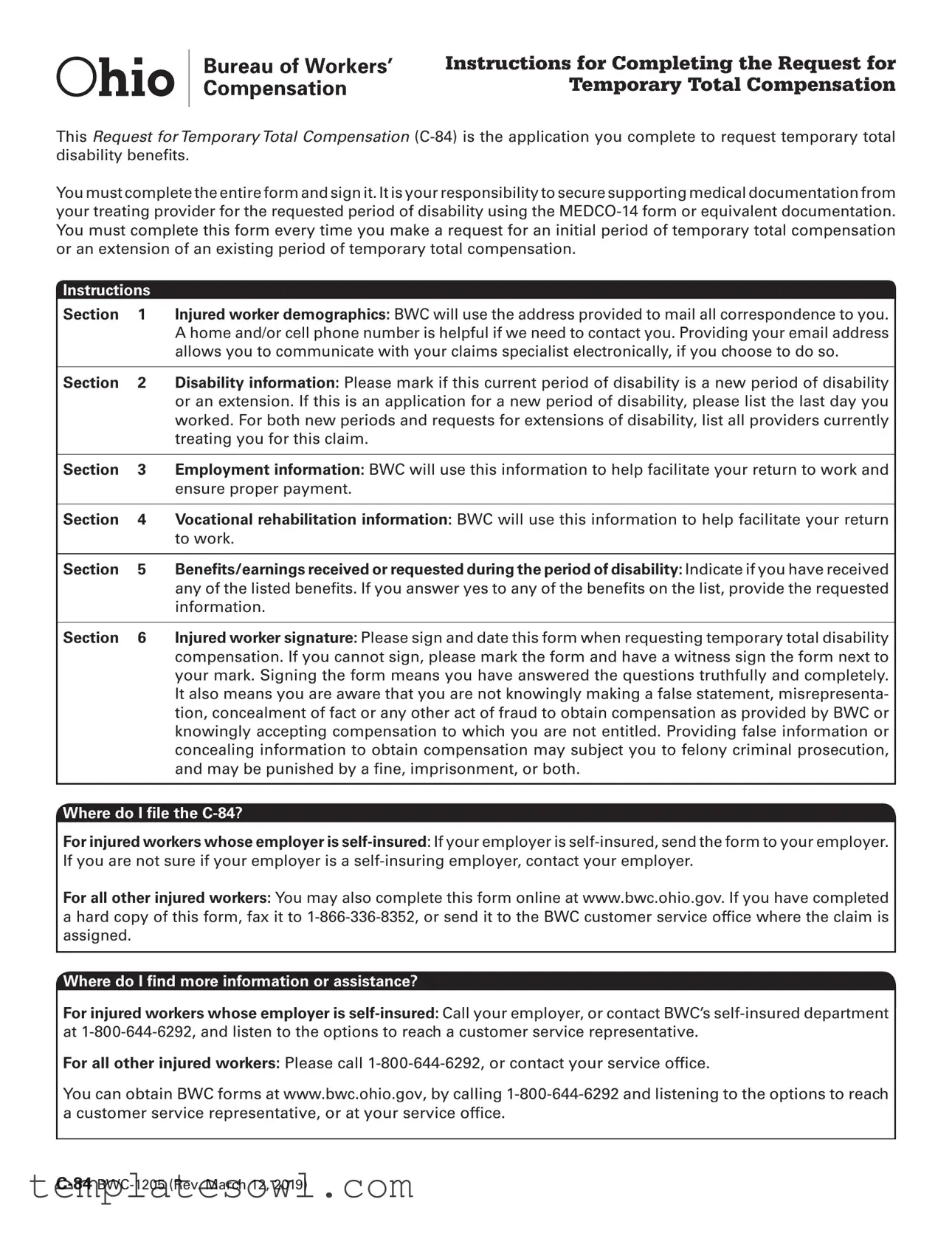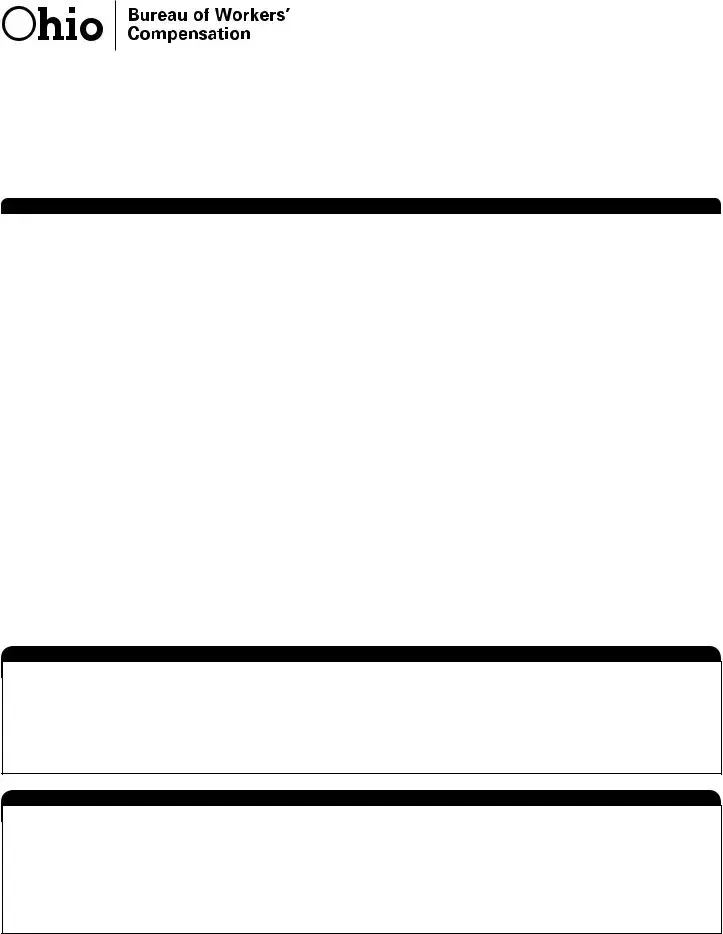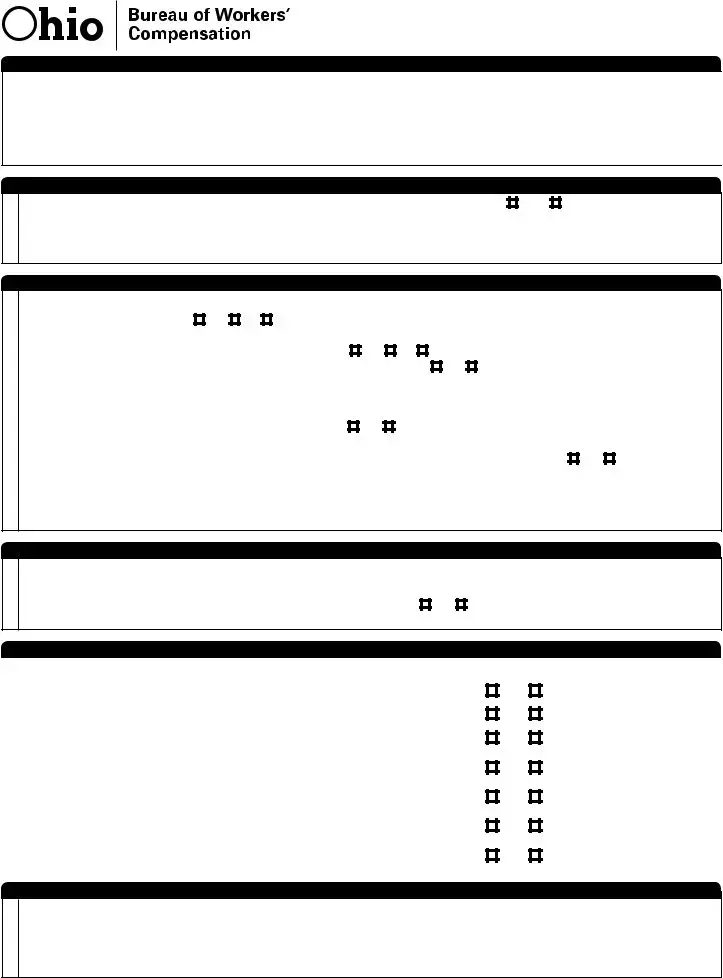What is the C-84 form used for?
The C-84 form is used to request Temporary Total Disability benefits. When an injured worker becomes unable to perform any work due to a work-related injury or illness, this form serves as the official application to receive compensation during the recovery period. Completing the entire form accurately is essential for processing the request.
Who is responsible for providing medical documentation?
The injured worker is responsible for securing supporting medical documents from their treating healthcare provider. This documentation should substantiate the period of disability being claimed. The MEDCO-14 form, or similar medical documentation, can be used to affirm the details provided in the C-84 form.
How often do I need to submit the C-84 form?
You must complete and submit the C-84 form each time you request an initial period of Temporary Total Compensation or an extension of an existing compensation period. Each application is treated distinctly, and supporting documentation must align with the designated request period.
Where do I file the C-84 form?
For injured workers employed by self-insured companies, the C-84 form should be sent directly to your employer. For those under other employers, you can complete the form online at www.bwc.ohio.gov. If you prefer to submit a hard copy, you can fax it to 1-866-336-8352 or mail it to the Bureau of Workers' Compensation (BWC) customer service office handling your claim.
What information is required in Section 1?
Section 1 of the C-84 form collects essential demographics about the injured worker. Details include your name, claim number, date of injury, address, and contact information. Providing a valid email address is optional but can facilitate easier communication with your claims specialist.
What should I include in the Disability Information section?
This section asks if you are applying for a new period of disability or an extension. If it's a new application, you must state the last day you worked. You will also need to list all healthcare providers currently treating you related to this claim. Accurate and comprehensive information here is crucial.
What happens if I provide false information on the C-84 form?
Providing false information or concealing relevant facts can lead to serious consequences, including felony criminal prosecution. This law underscores the importance of honesty when filling out the application. Signing the form means you affirm the truthfulness of your responses and understand the potential ramifications of fraud.
Can I receive benefits while working?
While receiving Temporary Total Compensation, you are not permitted to work. It is crucial to understand that engaging in any form of work while accepting these benefits may impact your eligibility and could lead to further legal consequences. Always be honest about your work status when filling out the C-84 form.


